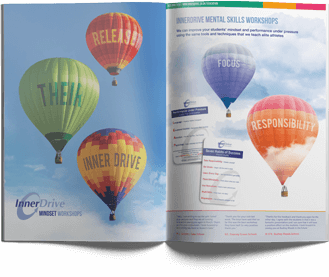As we continue to consider the best ways to help students after lockdown, the psychological concept of ‘flow’ might come in handy. It is a concept often applied in sports. ‘Flow’ describes when an athlete’s performance becomes seemingly effortless, and they are totally and utterly focused on the game. It helps them to feel positive, lose any fear of failure, and make their best performance.
Flow was originally conceptualised in 1990 by psychologist Mihaly Csikszentmihalyi, who described it as “a deeply rewarding and optimal experience characterised by intense focus on a specific activity to the point of becoming totally absorbed in it.”
So, if flow means intense focus on the present moment, and deep engagement in the activity at hand, surely it can help students to get more out of their post-lockdown learning. The only questions that remain are: does flow apply to students too? And if so, how can we, as educators, help students to experience flow?
What the research says
Research suggests that students can indeed experience flow, and that the concept of flow can be incorporated within Vygotsky’s Zone of Proximal Development theory.
The Zone of Proximal Development (ZPD) is a stage of learning where students can learn new concepts and tasks with the help and support of their teacher. Within the ZPD, you can use scaffolding, a teaching technique whereby teachers provide students with lots of help initially, then gradually reduce their assistance as students become more comfortable with the task. This enables the student to be able to later complete the task independently.
Flow describes the progression to a state where students have now developed the skills to complete these tasks by themselves. In this state, the level of challenge students face is high, but they also believe that they have the skills required to meet the challenge.
Therefore, flow is all about having a balance of skills and challenge, to allow students to become engrossed in their learning and boost their academic performance. Flow can also be highly rewarding, leading students to experience positive states, and motivating them to continue to strive for flow. So, not only does it help students to focus, flow can also help students enjoy their learning more. After lockdown, this could improve their well-being and boost their motivation to work hard and ‘catch up’.
How to get students back into ‘flow’
Most students will have experienced flow in their learning before. But after months of remote learning, they may struggle to settle back into classroom learning. So, how can teachers get their students back into flow to ease this process?
- Foster concentration - this is all about preparing and enabling students to focus and become absorbed in their post-lockdown lessons. Teachers can encourage students to get a good night’s sleep each night, remove potential distractions, eat breakfast in the morning and keep hydrated throughout the day.
- Confidence then challenge - the first step to developing flow is to build students’ confidence in their abilities, aided by teacher support as they learn something new. Once their confidence is boosted and their reliance on teacher support has reduced, teachers can gradually increase challenges to advance students’ learning. Students achieve flow in activities that are difficult enough to engage them, but not so hard that they overwhelm them.
- Encourage open goal setting - open goals are exploratory goals which challenge students to see how well they can do. These can help students to improve their performance and experience more intrinsic rewards such as enjoyment, pride and satisfaction, all boosting well-being.
- Give positive feedback - clear and positive feedback helps students to maintain flow. It can continue to enhance their confidence, while enabling them to improve further and progress towards their goals.
- Make it real-life, make it fun - students are more likely to engage when they feel that what they’re learning is relevant to their lives. They’re also likely to be more attentive and enthusiastic in their studies if their lessons are fun. Teachers can do this by using hands-on activities, humour, and by showing their own enthusiasm. This study found that students were more likely to experience flow when skills and challenge were balanced, but also when the lesson content was relevant, and when students completed activities like individual and group work, rather than passive work such as watching presentations and videos.
FINAL THOUGHTS
After months of distance learning, students may find adjusting to classroom learning again a little tricky. But, we think that if teachers can tap into the psychology of flow, they can help their students to engage in and enjoy their learning after lockdown, and be well on their way to achieving their full potential. We hope that these tips are helpful in doing so!
For more ideas on helping students after lockdown, take a look at our blogs on 3 things to consider as schools return and is developing a growth mindset the best post-lockdown boost?







